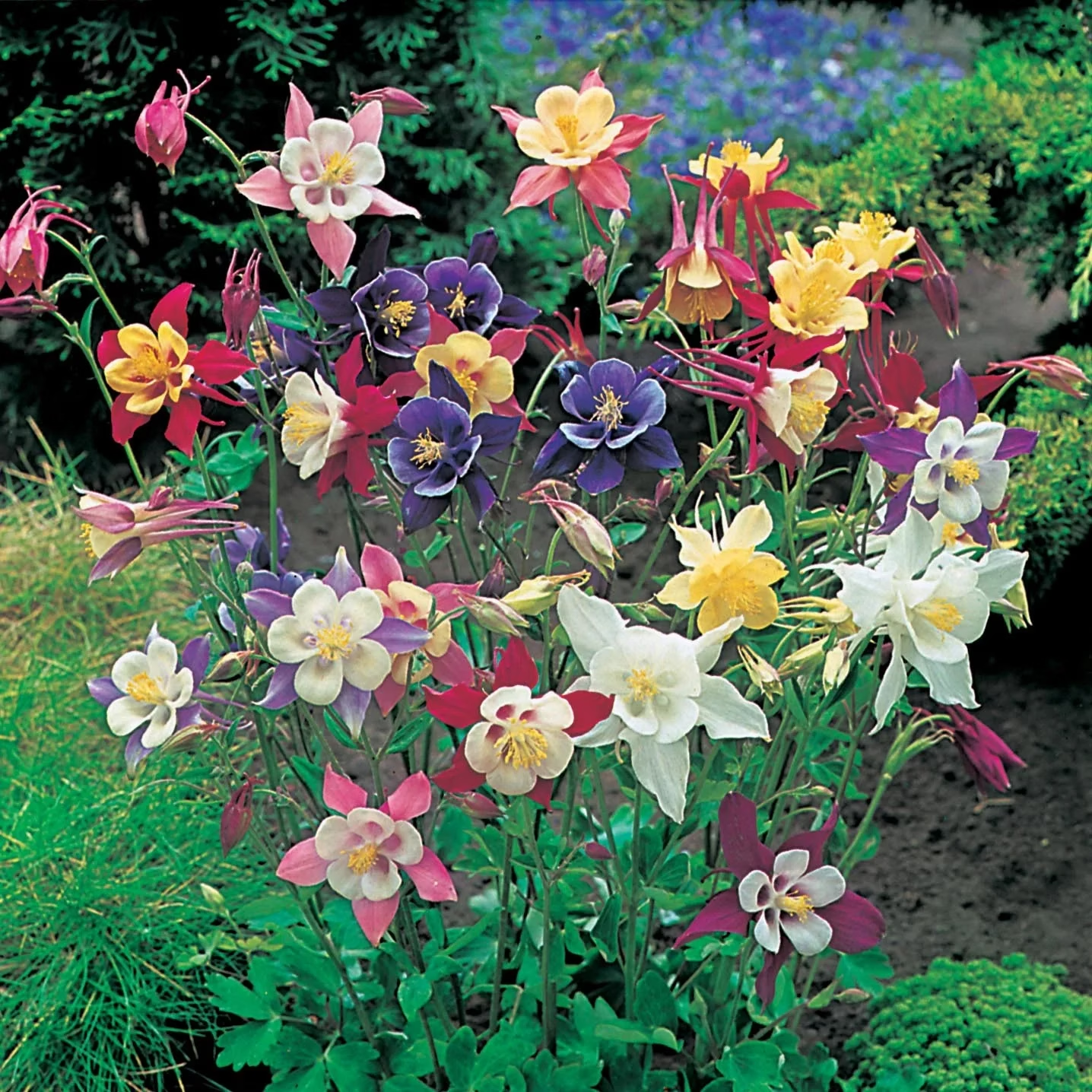
Aquilegias
Botanical Name
:
Aquilegia spp.
Plant Type
:
Herbaceous perennial
Seasons
:
Blooms in spring and early summer
Sun Level
:
4–6 hours of partial shade to full sun daily
Ideal Soil Temperature for Planting
:
65–70°F (13–21°C)
Soil Type
:
Well-draining, moist, and rich in organic matter. Preferably loamy soil.
Germination
:
21–30 days at 65–70°F (18–21°C); seeds may benefit from cold stratification
P.H. Level
:
6.0–7.0
Water/Irrigation
:
Keep soil consistently moist, especially during germination. They are relatively drought-tolerant when they mature. Consistent moisture during blooming is important.
Fertilization
:
Apply a balanced fertilizer in early spring as new growth begins. Side-dress with compost or liquid fertilizer during the growing season
Habit
:
Upright, clump-forming, with delicate, lacy foliage
Final Plant Height
:
6–36 inches (15–90 cm)
Spread
:
12–24 inches (30–60 cm)
Spacing
:
12–24 inches (30–60 cm)
Flowers
:
Unique, bell-shaped flowers with spurred petals in shades of blue, purple, pink, red, white, or yellow. Blooms in late spring to early summer.
Attracts
:
Bees, butterflies, and hummingbirds.
Uses
:
Woodland gardens, cottage gardens, borders, rock gardens, and cut flowers.
Companions
:
Ferns, Hostas, Bleeding Hearts
Pruning
:
Deadhead spent flowers to encourage prolonged blooming; cut back foliage after flowering to maintain tidiness.
Toxicity
:
Generally considered mildly toxic. All parts of the plant contain cardiac glycosides, which can cause stomach upset if ingested in large quantities.
Pests
:
Aphids, leaf miners, and caterpillars.
Diseases
:
Powdery mildew, rust, and leaf spot (if conditions are too humid)
Fun Fact
:
Aquilegias also known as Columbines, symbolize wisdom, strength, and happiness in the language of flowers.
Botanical Name
:
Aquilegia spp.
Plant Type
:
Herbaceous perennial
Seasons
:
Blooms in spring and early summer
Sun Level
:
4–6 hours of partial shade to full sun daily
Ideal Soil Temperature for Planting
:
65–70°F (13–21°C)
Soil Type
:
Well-draining, moist, and rich in organic matter. Preferably loamy soil.
Germination
:
21–30 days at 65–70°F (18–21°C); seeds may benefit from cold stratification
P.H. Level
:
6.0–7.0
Water/Irrigation
:
Keep soil consistently moist, especially during germination. They are relatively drought-tolerant when they mature. Consistent moisture during blooming is important.
Fertilization
:
Apply a balanced fertilizer in early spring as new growth begins. Side-dress with compost or liquid fertilizer during the growing season
Habit
:
Upright, clump-forming, with delicate, lacy foliage
Final Plant Height
:
6–36 inches (15–90 cm)
Spread
:
12–24 inches (30–60 cm)
Spacing
:
12–24 inches (30–60 cm)
Flowers
:
Unique, bell-shaped flowers with spurred petals in shades of blue, purple, pink, red, white, or yellow. Blooms in late spring to early summer.
Attracts
:
Bees, butterflies, and hummingbirds.
Uses
:
Woodland gardens, cottage gardens, borders, rock gardens, and cut flowers.
Companions
:
Ferns, Hostas, Bleeding Hearts
Pruning
:
Deadhead spent flowers to encourage prolonged blooming; cut back foliage after flowering to maintain tidiness.
Toxicity
:
Generally considered mildly toxic. All parts of the plant contain cardiac glycosides, which can cause stomach upset if ingested in large quantities.
Pests
:
Aphids, leaf miners, and caterpillars.
Diseases
:
Powdery mildew, rust, and leaf spot (if conditions are too humid)
Fun Fact
:
Aquilegias also known as Columbines, symbolize wisdom, strength, and happiness in the language of flowers.

